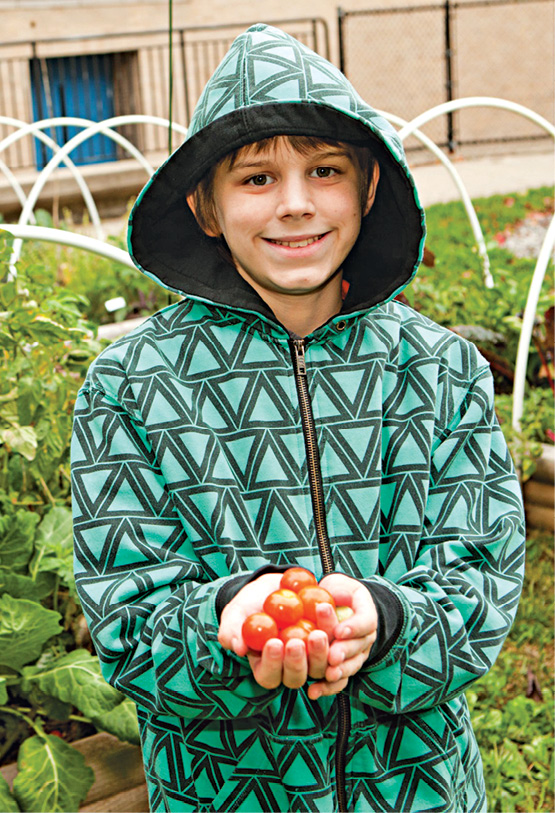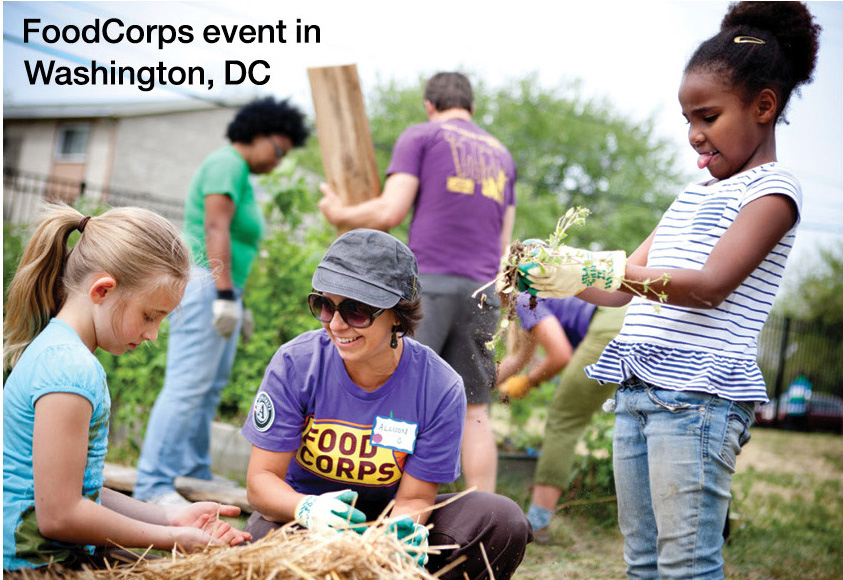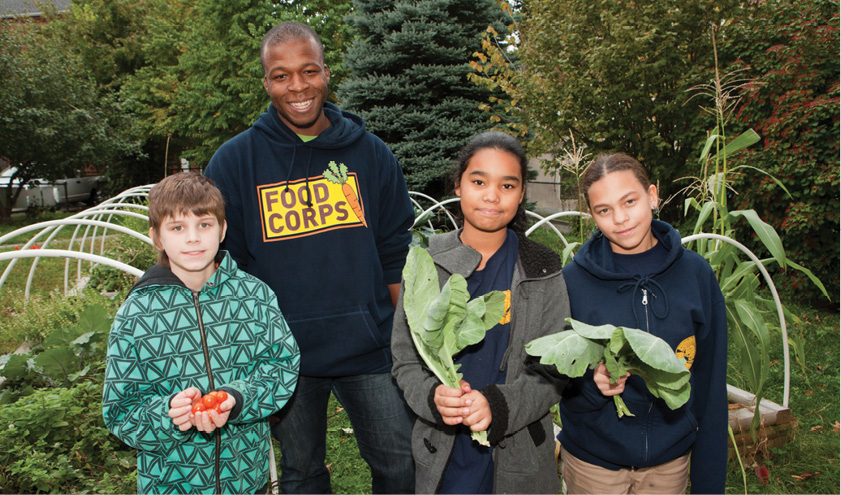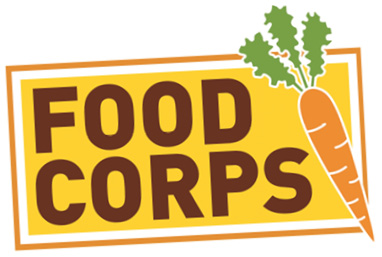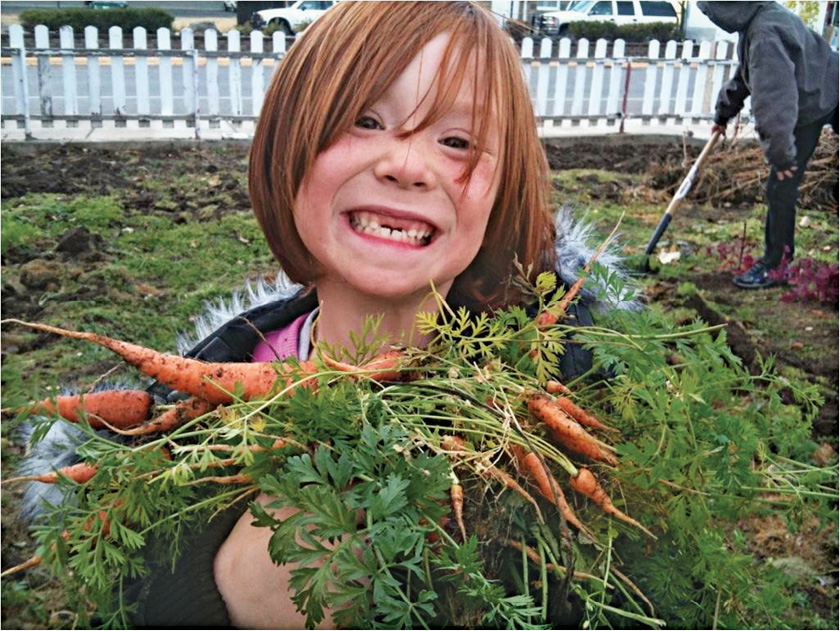FoodCorps, a charity supported by Cooking Light, is taking the healthy-food message to American school kids.
This fast-growing nonprofit organization places motivated leaders in limited-resource communities for a year of public service. Working under the direction of local partner organizations, FoodCorps service members implement a three-ingredient recipe to give all youth an enduring relationship with healthy food: teach kids what healthy food is and where it comes from, build and tend school gardens, and bring high-quality local food into public school cafeterias.
The Challenge In the last 30 years, the percentage of American children who are overweight or obese has tripled. Diet-related disease, diminished academic performance, and a shortened life expectancy threaten the future of our kids. What we feed our children and what we teach them about food in school and in school gardens shapes how they learn, how they grow, and how long they will live.
A National Network of Partners When it comes to the challenging and important work of improving school food, FoodCorps embraces a model of collaboration. In each of the states it serves, FoodCorps selected a lead partner organization to direct its work, collaborating with them to develop a network of local partners in the communities where service members are placed.
1. Knowledge: Educating young minds about food
The typical elementary student receives just 3.4 hours of nutrition education each year. FoodCorps service members work with teachers to increase the quality and quantity of nutrition education, and they make learning about food fun. They conduct hands-on cooking demonstrations and model positive lifestyle choices that motivate kids to exercise and eat well.
2. Engagement: Getting hands in the dirt in school gardens
School gardens are powerful gateways for getting kids to try new foods. They also bring parents and community members together and help them become advocates for healthier school lunches. FoodCorps service members establish or expand school garden programs, engaging students, parents, and community volunteers in the active outdoor play of growing fruits and vegetables.
3. Access: Serving healthy school food to kids
Children who know the farmer who grew their broccoli are more likely to eat it. Studies show that children participating in Farm to School programs choose to eat one more serving of fruits and vegetables per day. FoodCorps service members create relationships between school food-service directors and local farmers and help transform cafeterias into educational environments where healthy food choices are celebrated and served.
The publisher will donate $1 from the sale of each Pick Fresh Cookbook to FoodCorps up to a maximum of $10,000.
Inspiring Stories From the Field Each service member spends a year in one of the high-obesity, limited-resource communities that FoodCorps serves across the country. Here, three share their experiences:
“A ringing highlight from my first year was using ingredients right from the garden to make a salsa. A lot of the kids had no idea we could make the stuff in the jar, but better—without the high salt and fat content—and the kids absolutely loved it!” — Norris Guscott
Member: Norris Guscott
Location: Boston, MA
Norris’ parents cultivated his interest in food from a young age, teaching him to eat right and lead a healthy lifestyle. Since then, he’s encouraged his friends and family to do the same. In college he studied community psychology, which focuses on the problems of people in relation to their surroundings and emphasizes that helping whole communities is the path to positive changes in physical and psychological health. Norris realized that he could combine his academic knowledge with his passion for health and nutrition to make a difference.
Working in Boston, Massachusetts, Norris connects students and their families with local food resources; meets with parents, teachers, administrators, and community groups to improve the school food environment; and brings nutrition education and school gardening to high-need schools.
“One of the best parts of working with kids in the garden is seeing how receptive they are to eating whole foods if they grow them themselves. My students harvested two heads of broccoli for our afternoon salad, but ate all of it before we got inside—all we had left were stumps.” — Jessica Polledri
Member: Jessica Polledri
Location: Portland, OR
After viewing a segment on 60 Minutes about food deserts, Jessica’s life changed course. She realized that many people living in poverty don’t have access to healthy foods in their local grocery stores and corner markets. Since then, Jessica has focused on improving eating habits, particularly in at-risk children in areas with a high incidence of diet-related disease. She’s served with FoodCorps at Growing Gardens in Portland, Oregon, for two years. Jessica spends most of her time growing veggies, cooking with kids, and helping them discover their passion for beets, dirt, and worms.
“One of the highlights from my first year was helping a particular middle-school student realize that she loved garlic. When I first introduced it, she raved about garlic powder, but hated ‘real garlic.’ On a different day, we roasted some garlic for a recipe and when it came time to use it, it was all gone. I looked around to see where it went and found her huge smile saying, ‘I love roasted garlic.’” — Mauricio Rosas-Alvarez
Member: Mauricio Rosas-Alvarez
Location: Des Moines, IA
As far back as he can remember, Mauricio Rosas-Alvarez’s life has revolved around food. He comes from a big Mexican family that builds its community, values, and morals at the table.
He is a culinary and nutrition graduate of Johnson & Wales University and served two terms with FoodCorps in Des Moines, Iowa, where he has taught the Pick-a-Better-Snack curriculum in three schools. He also develops and implements two garden- and cooking-focused after-school programs, develops and tends school gardens for the Des Moines Public School District, and identifies procurement opportunities for classrooms and cafeterias. He served as coordinator of the agricultural appreciation aspect of the Culinary Arts Program and as the chef recruiter for the Let’s Move Chefs to Schools event.
Get Involved!
FoodCorps is always looking for friends to:
• Support their work through sponsorships and donations
• Volunteer alongside service members in the field
• Tweet about them and connect with them on Facebook to spread the word
• Connect with their community to stay informed
To get involved, go to www.foodcorps.org/get-involved

